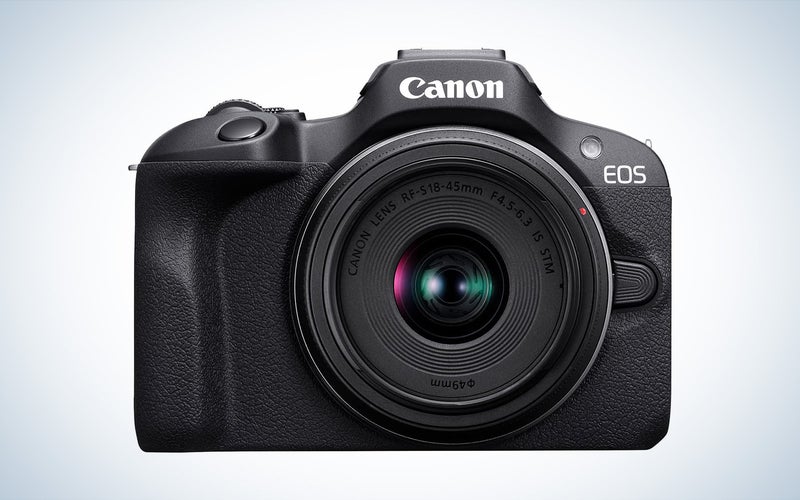We may earn revenue from the products available on this page and participate in affiliate programs. Learn more ›
Canon cameras were pioneers in embracing HD video, with the EOS 5D Mark II being the first DSLR to enable full-HD video recording. This advancement allowed photographers to explore videography without the hefty price tag of a traditional cinema camera. Since then, Canon has focused on developing cameras that excel in both video and still photography. Their current range includes various options tailored for different types of video creators. Continue reading to discover the top Canon cameras for videography.
How we selected the best Canon cameras for video
To determine the best Canon cameras for video, we sought options that would cater to a diverse group of videographers: from professionals to content creators, vloggers, and enthusiasts aiming to document everyday moments without relying solely on their phones. Our decision-making process took into account various budgets, features, and user-friendliness. We have firsthand experience with most of the featured cameras and also consulted editorial reviews and user insights for our evaluations.
The best Canon cameras for video: Reviews & recommendations
Canon presents an extensive selection of cameras designed for video creators at every skill level and budget. No matter your experience, Canon likely has a suitable model for you.
Best overall: Canon EOS R5C
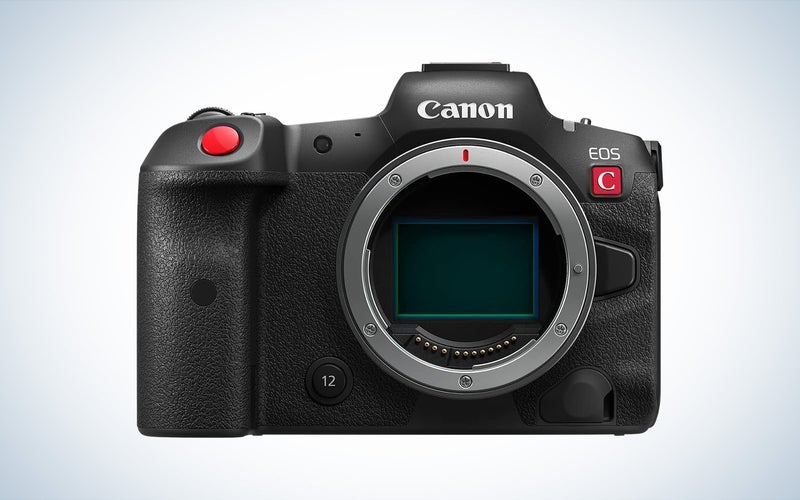
Specs
- Resolution: 45 megapixels
- Sensor size: Full-frame
- Lens mount: Canon RF
- Image stabilization: Digital only
- Memory card slots: Slot 1: CFexpress Type B, Slot 2: SD/SDHC/SDXC (UHS-II)
- Weight: 1.7 pounds
- Dimensions: 5.6 x 4 x 4.4 inches
Pros
- 8K video recording
- Outstanding autofocus
- Integrated fan
- Includes waveform monitoring
Cons
- Limited battery life
- Lacks optical stabilization
The Canon EOS R5C can be seen as the video-focused counterpart to the EOS R5. This camera, which supports 8K recording, forgoes image stabilization but includes a built-in fan to prevent overheating during longer shoots. Built around a 45-megapixel sensor paired with the DIGIC X image processor, it delivers 15 stops of dynamic range, records 10-bit 4K video at 120 fps, and captures 45-megapixel stills.
Additionally, the Canon EOS R5C boasts an ergonomic design with customizable buttons, making it a competent video camera that’s compact compared to dedicated cinema cameras and more budget-friendly. While a longer battery life would be beneficial, this camera remains a solid choice for filmmakers at various levels.
Best for pros: Canon EOS C300 Mark III
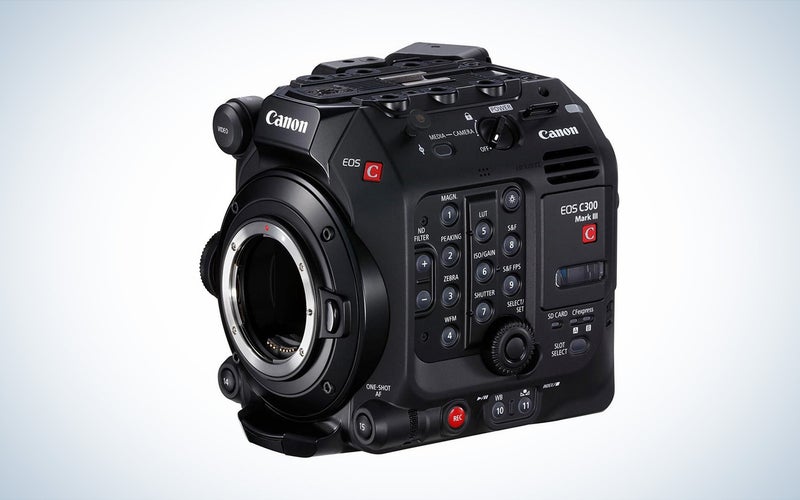
Specs
- Resolution: 8.85 megapixels
- Sensor size: Super 35mm
- Lens mount: Canon EF
- Image stabilization: Yes, electronic IS
- Memory card slots: Dual slot: CFexpress Type B and Single slot: SD/SDHC/SDXC
- Weight: 3.86 pounds (body only)
- Dimensions: 6 x 5.8 x 6.6 inches (without grip)
Pros
- Exceptional image quality
- Cinema RAW light capability
- User-friendly menus
- Approved for Netflix streaming
Cons
The Canon EOS C300 Mark III is a premium cinema camera intended for film projects and commercial productions. It features a super 35mm sensor and advanced color science that accurately reproduces skin tones. It can film in 4K at 120p, uses Dual Pixel CMOS AF up to 120p, and allows for 4-channel recording.
Its modular design makes customization easy with additional accessories.
Depending on the specific requirements of a filmmaker, this camera may not be the most affordable option. However, for those working on commercial productions, documentaries, or professional film projects, it stands out as one of the top Canon models for video on the market.
Top Mirrorless: Canon EOS R6 Mark II
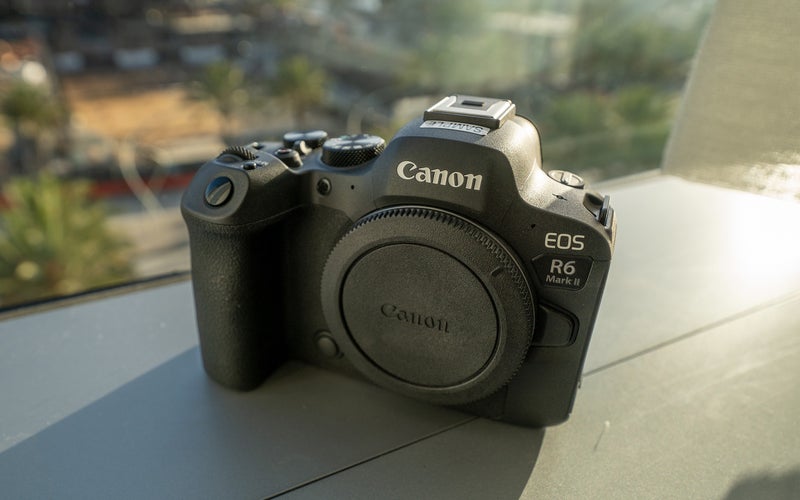
Specifications
- Resolution: 24.2 megapixels
- Sensor Size: Full-frame
- Lens Mount: Canon RF
- Image Stabilization: Sensor-Shift, 5-Axis
- Memory Card Slots: Dual; SD/SDHC/SDXC (UHS-II)
- Weight: 1.3 pounds (body only)
- Dimensions: 5.4 x 3.9 x 3.5 inches
Advantages
- 10-bit video recording
- False color display
- Can shoot 6K video with an external recorder
- Dedicated controls for video
Disadvantages
- Autofocus can be inconsistent when shooting video
- IBIS may cause warping at the frame’s edges
The EOS R6 Mark II is an exceptional hybrid camera ideal for those desiring to capture both photos and videos. Canon has thoughtfully organized the controls for each function distinctly. The camera can record 6K when paired with an external recorder or 4K at 60p internally, boasting advanced features like false color display, C-Log, and HDR PQ modes.
The image quality is superb, although autofocus performance while video shooting may vary. Overall, the R6 Mark II serves a wide range of shooters at a price that is almost half that of the R5 series.
For a more in-depth look at the R6 Mark II, explore our full review.
Top Choice for Vlogging: Canon EOS R10
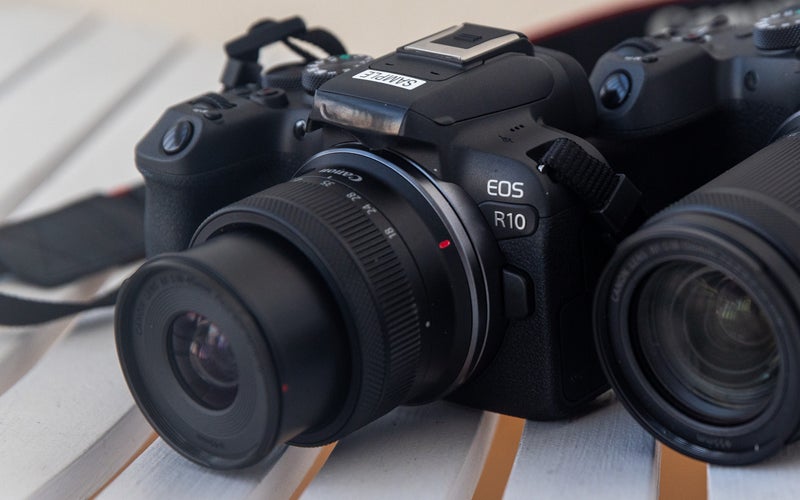
Specifications
- Resolution: 24.2 megapixels
- Sensor Size: APS-C
- Lens Mount: Canon RF
- Image Stabilization: Digital (video only)
- Memory Card Slots: Single SD/SDHC/SDXC (UHS-II)
- Weight: 15.1 ounces
- Dimensions: 4.8 x 3.5 x 3.3 inches
Advantages
- 10-bit HDR PQ video support
- Can shoot 4K at 60p
- Budget-friendly
- HDR capabilities straight from the camera
Disadvantages
- Autofocus in video mode can be unreliable
- Rolling shutter issues when in 4K
Many vloggers prefer a simple, compact camera for quick footage capture without numerous settings or menu navigation. The EOS R10 shines in this area, using the entire sensor for UHD 4K 30p recording, and it can shoot 4K 60p by cropping the sensor.
The fully articulating screen makes it perfect for vlogging on the go or shooting in a home studio. It also offers HDR capabilities right out of the camera, enabling quick uploads to YouTube or direct connections to an HDR TV. However, this model doesn’t support Log recording, and autofocus can struggle with fast-moving subjects. Nonetheless, it remains an excellent pick for content creators needing easy-to-edit footage.
To find out more about the Canon EOS R10, check out our full review.
Best Budget-Friendly Option: Canon EOS R100
